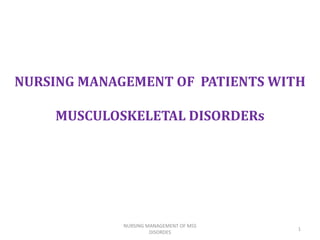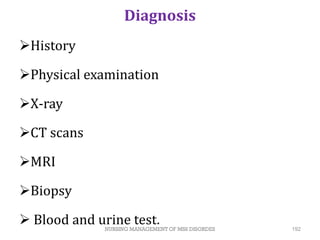The document discusses nursing management of patients with musculoskeletal disorders. It covers an overview of the anatomy and physiology of the musculoskeletal system including the bones, muscles, and joints. It also discusses common musculoskeletal disorders, nursing assessment of the musculoskeletal system, and the medical and surgical management of musculoskeletal disorders. Nursing plays an important role in caring for patients with musculoskeletal conditions through assessments, developing care plans, and supporting medical and surgical treatments.




























































































































































































































































